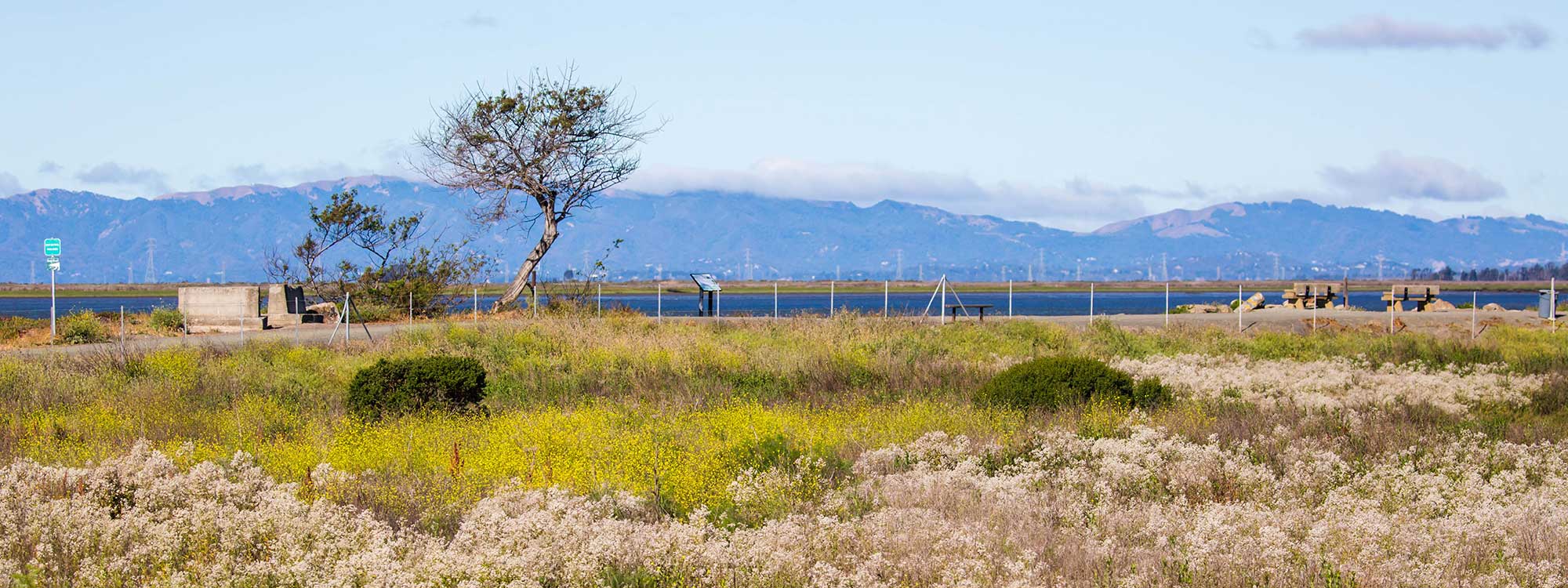Update: After a very close election, the results have finally been called and we are thrilled to report that American Canyon residents stood up to sprawl by voting no on Measure J (by a mere 249 votes), protecting ag lands, open space, wildlife habitat, and watersheds from destructive development along the San Francisco estuary!
Greenbelt Alliance encouraged a “NO” vote for Measure J, which would have expanded the City of American Canyon’s Urban Limit Line to include 157 undeveloped acres of land edging the San Francisco estuary and one of the last remaining wetlands in the Bay which is currently owned by Green Island Property. The land is currently being used for vineyards but due to the industrial nature of the surrounding areas, Green Island Property is having difficulty selling its land and would like to rezone it for industrial purposes.
This measure proposed to turn what should be a restored marsh and the Bay Trail into a cement-covered tract of land covered in warehouses.
Why We Opposed Measure J
It is imperative that we continue to protect our agricultural lands, open space, and watersheds from urban sprawl. Expanding our Urban Limit Line will only exacerbate the problem and encourage more development further from homes and jobs which will inevitably increase our overall greenhouse gas emissions and vehicle miles traveled.
American Canyon is a four-mile, relatively new city with big plans for growth, but that growth cannot come at the expense of the flood risk and greenhouse gas impacts that destroying this wetland would have. American Canyon has about 13,000 registered voters yet only about 3,000 consistently appear at the polls so the fate of these wetlands is in the hands of a very small number of individuals.
This measure was on the ballot because investors in the winery were not able to sell it using the current zoning designation so in order to have a more lucrative opportunity with their investment, they got the number of signatures needed to put this on the ballot using false statements, referring to the land as blighted and the soil damaged by natural saltwater intrusion, neither of which is true.
Why is it critical to protect this land?
We are already experiencing devastating effects of the climate crisis like wildfires and flooding. Wetlands sequester and store large quantities of carbon in the vegetation and sediment below. These are one of the few remaining wetlands in the bay – over 80 percent of the wetlands in the Bay have disappeared. These are also wetlands that provide principal habitat for migrating waterfowl and are critical to overwintering birds along the Pacific Flyway. They also provide spawning and rearing habitat for fish, especially the endangered green sturgeon, whose juveniles are found in the lower reaches of the Napa River.
We can no longer support the continued development of property alongside the estuary, marshes, and wetlands without jeopardizing the future of homes, local residents, and everything else along the shoreline. Land decisions made 20-30 years ago are no longer viable in the face of what is happening today.
Who else opposed it?
Photo: Melissa McMasters via Flickr





